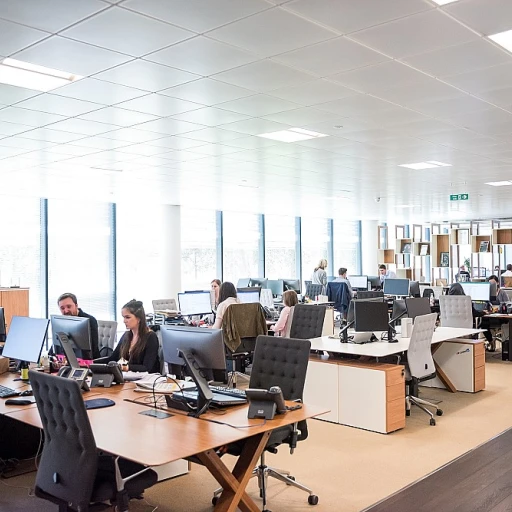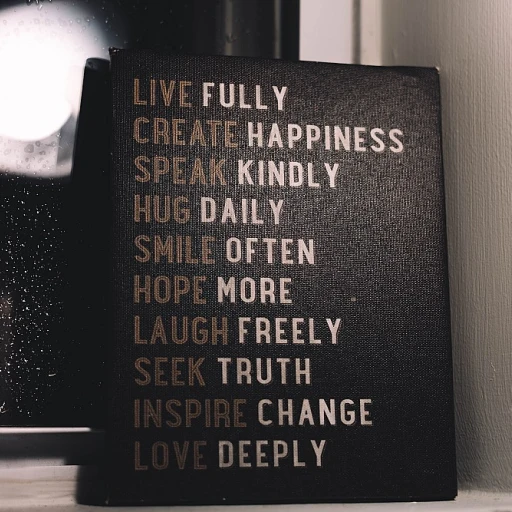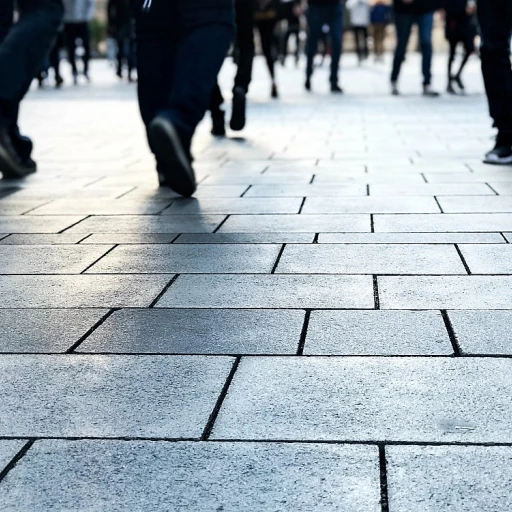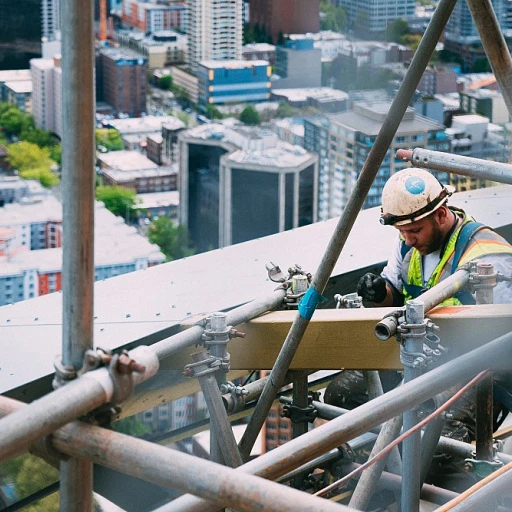
Understanding the Connection Between Interior Design and Mental Health
The Link Between Design and Mental Health
Understanding the relationship between interior design and mental health is crucial for creating spaces that promote well-being. Interior design does more than just influence aesthetics; it has a profound impact on our mental state and well-being. The choices made in color schemes, furniture, and natural elements all affect mental health, sometimes subtly and other times noticeably. Incorporating elements like natural light and biophilic design can significantly reduce stress and enhance mood. Natural light, in particular, plays a crucial role in our mental well-being by fostering a sense of openness and reducing stress levels. Incorporating large windows or using reflective surfaces can help maximize natural light in living spaces, contributing to a healthier environment. Color also affects how we feel in a room. For example, cool colors like blues and greens are calming and can create a relaxing atmosphere. On the other hand, warm colors evoke energy and can be used to inspire activity and creativity. Understanding these design elements allows interior designers to manipulate spaces to enhance mental health effectively. For further insights into managing economic factors while prioritizing mental health within workplaces, you might find ensuring compliance in economic assistance programs enlightening.Key Design Elements That Influence Well-being
Exploring Design Components That Foster Mental Wellness
In the realm of interior design, certain elements play a significant role in influencing the mental health of individuals who spend considerable time in these spaces. Understanding these elements can guide interior designers and homeowners to create environments that nurture and support well-being.
One of the most profound elements is the use of natural light. Ample natural light in a space is known to enhance mood and productivity, reduce stress levels, and promote a positive atmosphere. It is particularly beneficial in office spaces where individuals spend much of their time indoors. Substituting harsh artificial lighting with soft, adjustable fixtures can also mimic natural light, thus maintaining the positive mood even when natural light is minimal.
Color schemes are another powerful factor. Different colors affect mental states and can evoke various emotions. For instance, soft blues and greens are popular in creating a calming effect, while warm hues can energize and uplift the mood. This is where companies like Mintpaldecor shine, as they specialize in selecting shades that harmonize with the intended mood of a room, enhancing the overall well-being of its occupants.
Furthermore, furniture and room layout contribute significantly to a sense of comfort and purpose. Ergonomically designed furniture can prevent physical strain, thereby reducing stress and promoting a healthier state of mind. Arranging furniture to promote ease of movement and a sense of openness can decrease feelings of confinement or clutter, both of which can influence stress levels and mental well-being.
The introduction of biophilic design elements, such as natural materials and greenery, also plays a crucial role in creating a space that supports mental health. These elements bring a touch of nature indoors, which has been associated with reducing stress and improving relaxation. Ensuring a safe and secure workplace environment is essential in fully realizing the benefits of such interior design strategies.
By combining these design elements thoughtfully, interior spaces can be transformed into nurturing environments that bolster mental wellness and promote a sense of balance and tranquility.
Cultural Considerations in Indian Office Design
Balancing Tradition and Modernity in Office Interiors
In the diverse cultural tapestry of India, office design plays a crucial role in influencing the mental well-being of employees. Understanding the subtle interplay between traditional elements and contemporary aesthetics allows for the creation of spaces that enhance mental health in Indian offices. Interior designers often focus on integrating cultural motifs and natural elements to create environments where employees feel a sense of belonging and purpose. Indian offices frequently incorporate natural materials and vibrant colors that are reflective of the country’s rich heritage. These elements can significantly affect mood and reduce stress levels, as they promote a sense of warmth and comfort. Natural light is another key component that needs special attention in Indian interiors, as it greatly impacts mental well-being. Offices with ample sunlight not only improve the aesthetic appeal but also contribute to maintaining a healthier work atmosphere. Biophilic design is gaining traction in Indian offices as a way to connect the built environment to nature. By including plants and natural elements, companies can create soothing spaces that support mental health. These elements are not only visually pleasing but also help in reducing stress levels, boosting productivity, and improving overall mood. Mintpaldecor leverages these cultural considerations and integrates them into modern office design strategies. By acknowledging traditional values while embracing innovative design ideas, they help create office spaces that are harmonious and mentally stimulating. Such dynamic spaces promote an environment where employees can thrive both professionally and personally. For a deeper look at how cultural considerations play into effective office design, read more about enhancing efficiency through control testing in Indian companies here. The integration of cultural insights into office design not only enriches the work environment but also supports a mentally healthy workplace.Mintpaldecor's Approach to Mental Health-Friendly Design
Mintpaldecor's Innovative Design Solutions for Enhanced Mental Well-Being
Mintpaldecor, a leading interior design firm, understands the profound impact that design elements have on mental health. Their approach centers around creating spaces that promote well-being and reduce stress levels by incorporating key elements that align with mental health-friendly practices.
One of the primary strategies employed by Mintpaldecor is the use of natural light. Natural light not only brightens a room but also significantly affects mental health by boosting mood and energy levels. By designing spaces that maximize exposure to natural light, such as strategically placing windows or using lighter colors in darker rooms, Mintpaldecor ensures a sense of openness and warmth.
In addition, Mintpaldecor integrates biophilic design principles, which involve bringing natural elements into indoor spaces. This includes the use of natural materials like wood and stone, and incorporating indoor plants to create a connection with nature. These elements help in creating a soothing environment that promotes a sense of tranquility and relaxation.
Color psychology is another crucial aspect of their design process. Mintpaldecor expertly selects colors that enhance mood and create a calming atmosphere. For instance, cool tones like blues and greens are often used to create a serene environment, while warm colors can uplift and energize spaces.
Furniture selection plays a significant role as well. Mintpaldecor focuses on choosing ergonomic and comfortable furniture that supports a healthy posture and reduces physical stress, particularly for those working long hours in office environments.
Furthermore, Mintpaldecor emphasizes the importance of flexible and adaptable spaces. Their designs often incorporate movable partitions and modular furniture, allowing for reconfiguration of spaces to suit different needs and preferences, thereby enhancing mental well-being by offering a sense of control over one's environment.
By focusing on these design elements, Mintpaldecor demonstrates how interior design can positively affect mental well-being, making spaces not only functional but also supportive of mental health for their clients in India.
Challenges in Implementing Mental Health-Focused Designs
Balancing Aesthetics and Practicality in Wellness Design
The journey to incorporate mental health-focused designs in office spaces often presents unique challenges. Although the benefits of such designs are immense, implementing them requires overcoming several potential roadblocks. One core challenge is the balance between aesthetics and practicality. Office spaces need to be not only visually appealing but also functional. Interior designers must carefully select elements that enhance comfort while promoting productivity and well-being.- Resource Constraints: Budget limitations can impede the procurement of high-quality materials that embody natural elements or cutting-edge design trends.
- Space Limitations: Urban Indian offices often face space constraints, making it difficult to integrate larger biophilic elements like greenery or natural light sources.
- Cultural Sensitivity: Diverse cultural preferences can complicate design decisions. While some prefer bright colors to energize the mood, others might be calmed by softer hues.
- Utilizing smaller yet impactful design elements, such as sustainably sourced furniture and versatile color palettes that adjust to varying employee needs.
- Promoting the use of natural light by creating open spaces where light flows freely, reducing stress levels and promoting a sense of well-being.
- Emphasizing the integration of natural materials and themes even in compact rooms, using innovative solutions like vertical gardens or natural light-mimicking LED lighting.













